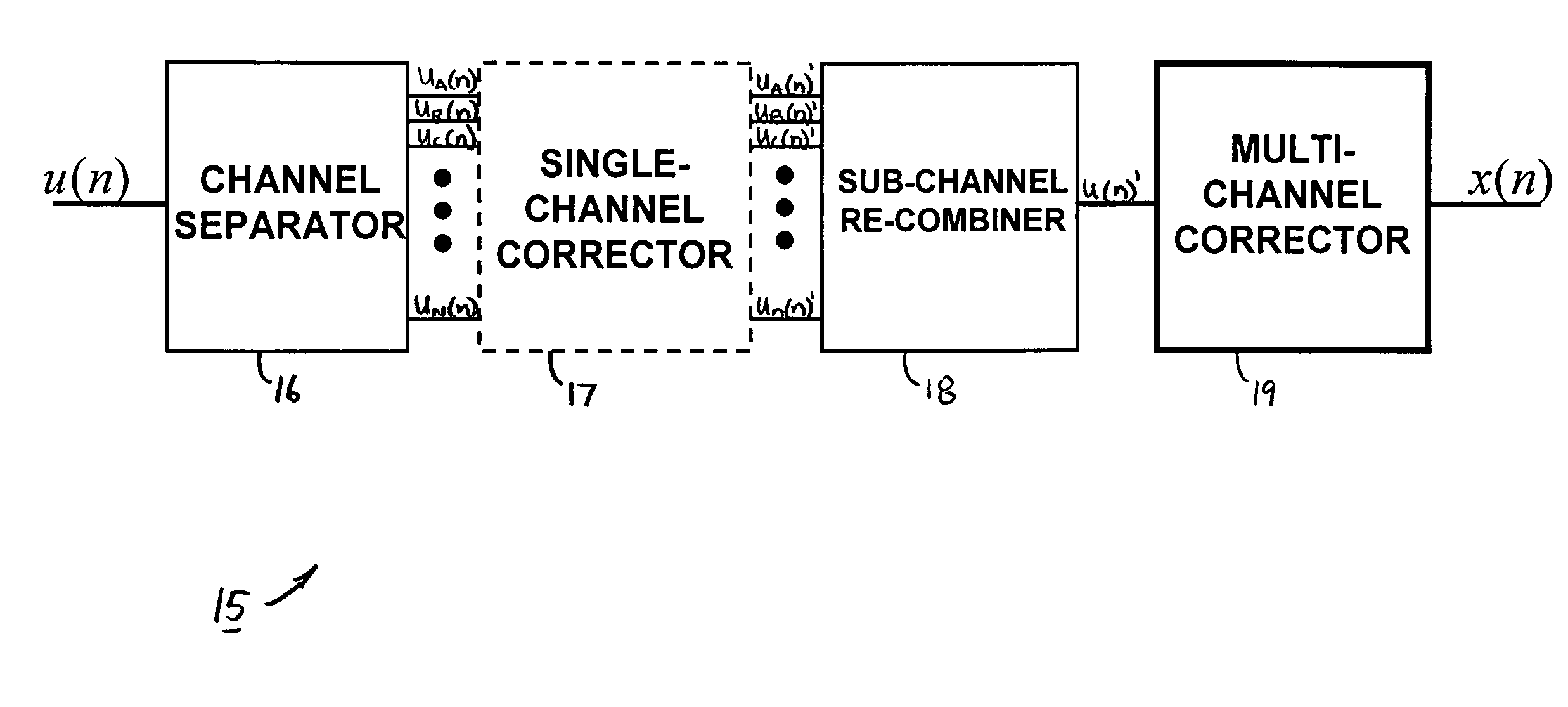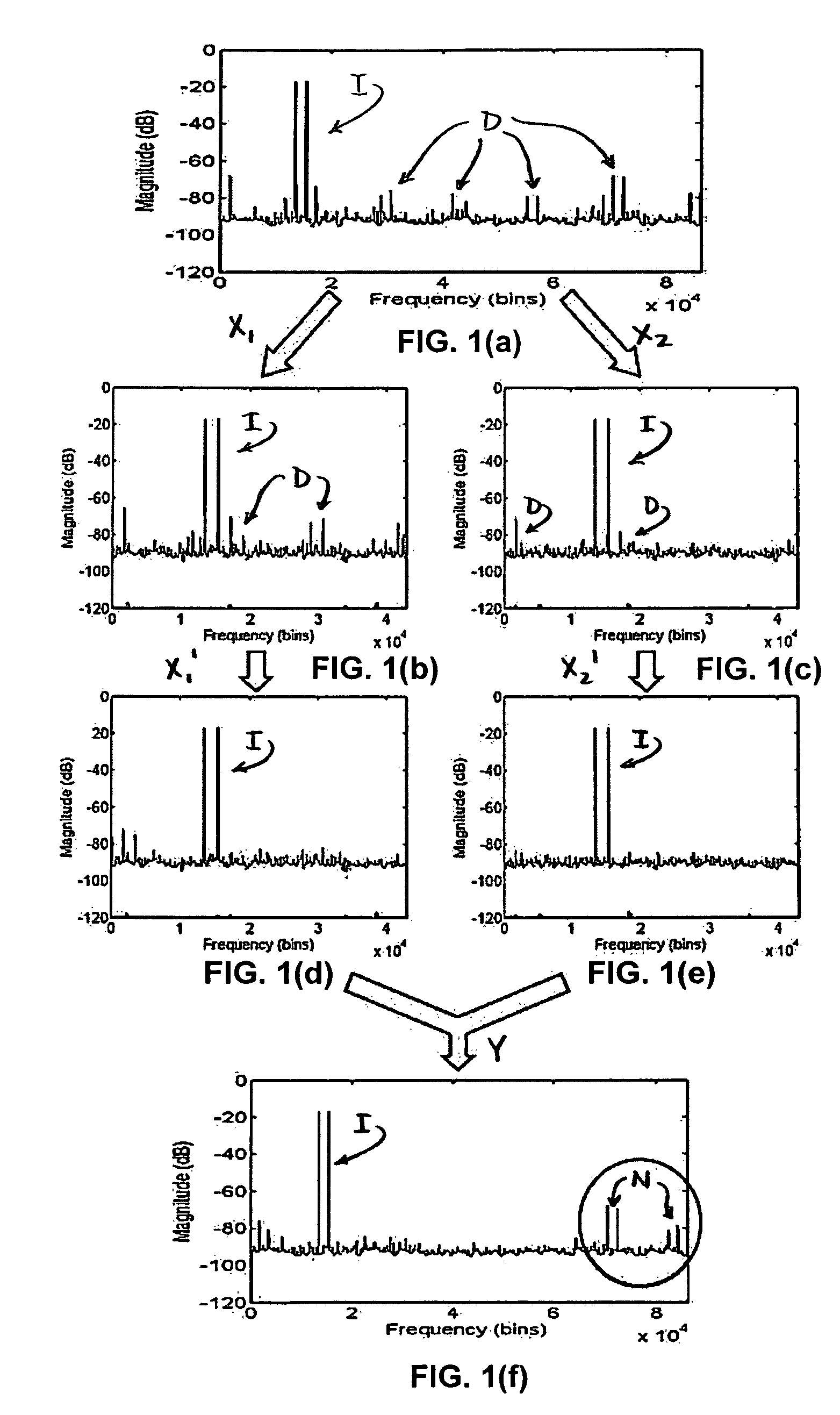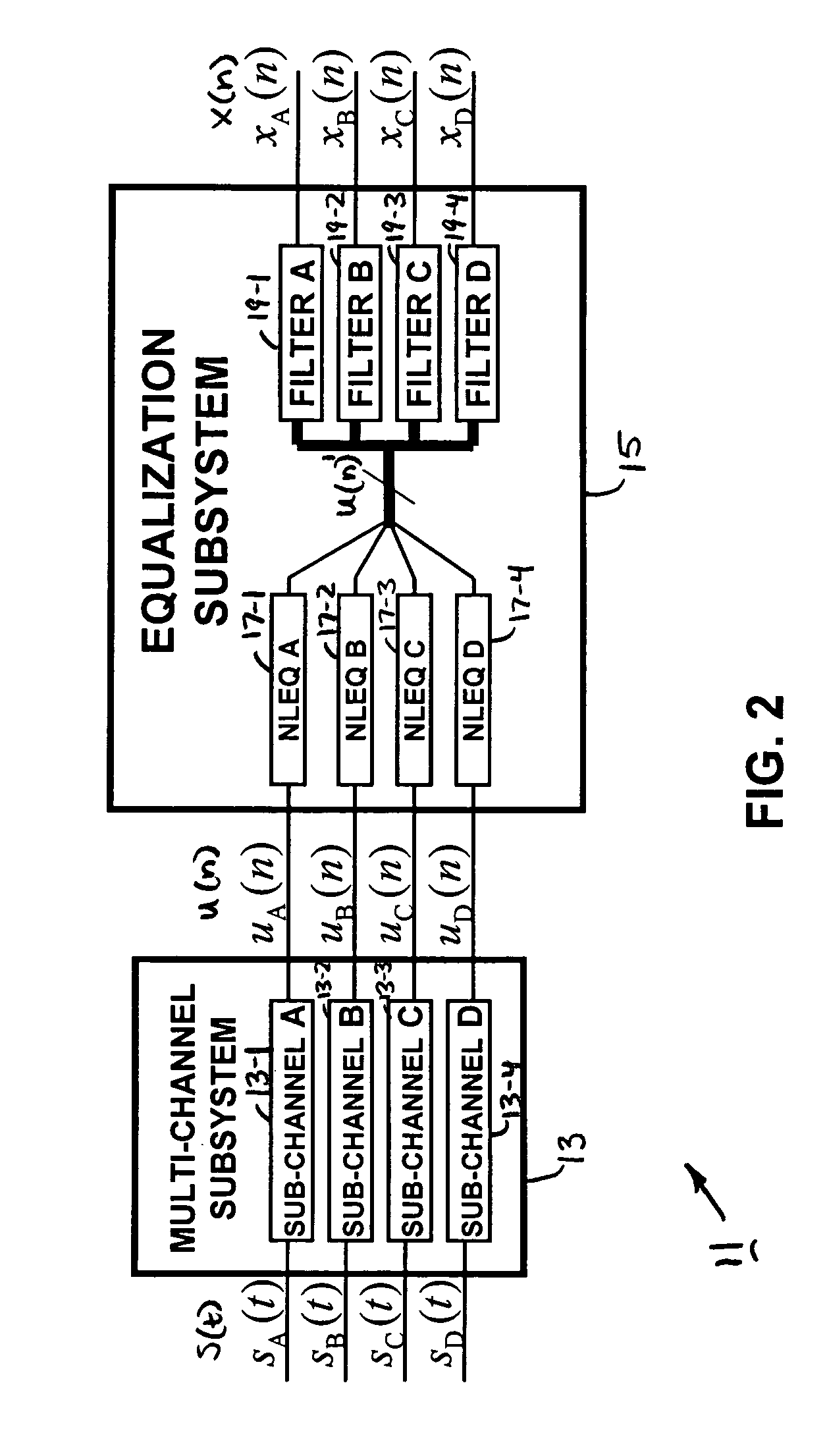System and method of multi-channel signal calibration
a multi-channel subsystem and multi-channel technology, applied in transmission systems, physical parameter compensation/prevention, instruments, etc., can solve the problems of significant compromise of multi-channel subsystem performance, high undesirable, and significant relative calibration errors between plurality of elements
- Summary
- Abstract
- Description
- Claims
- Application Information
AI Technical Summary
Benefits of technology
Problems solved by technology
Method used
Image
Examples
Embodiment Construction
System and Method of Multi-Channel Signal Calibration
[0036]Referring now to FIG. 2, there is shown a simplified block diagram of a signal processing system constructed according to the teachings of the present invention and identified generally by reference numeral 11. As can be seen, system 11 comprises a multi-channel subsystem 13 which converts a set of analog input signals s(t) into an unequalized set of digitized output signals u(n) and an equalization subsystem 15 which is responsible for, inter alia, calibrating the distorted, complete-channel signal u(n) in such a manner so as to yield an equalized, complete-channel output signal x(n). As will be described in detail below, equalization subsystem 15 minimizes the presence of calibration errors produced by multi-channel subsystem 13 by calibrating the individual sub-channels of output signal u(n) relative to one another, which is highly desirable.
[0037]Multi-channel subsystem 13 represents any signal processing device which in...
PUM
 Login to View More
Login to View More Abstract
Description
Claims
Application Information
 Login to View More
Login to View More - R&D
- Intellectual Property
- Life Sciences
- Materials
- Tech Scout
- Unparalleled Data Quality
- Higher Quality Content
- 60% Fewer Hallucinations
Browse by: Latest US Patents, China's latest patents, Technical Efficacy Thesaurus, Application Domain, Technology Topic, Popular Technical Reports.
© 2025 PatSnap. All rights reserved.Legal|Privacy policy|Modern Slavery Act Transparency Statement|Sitemap|About US| Contact US: help@patsnap.com



